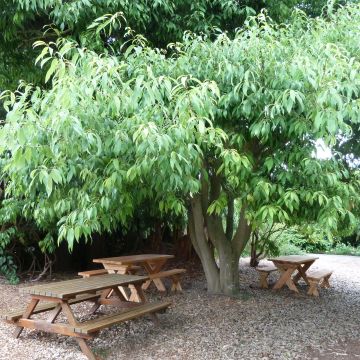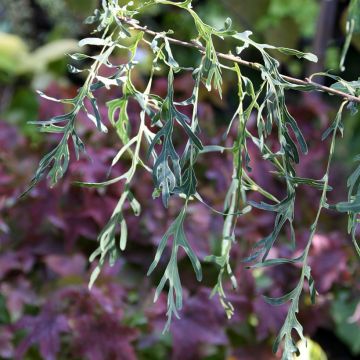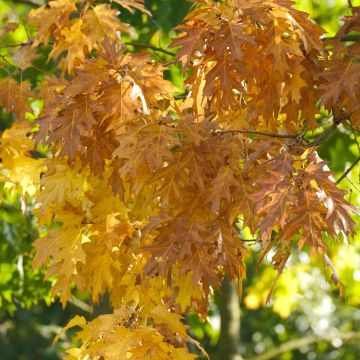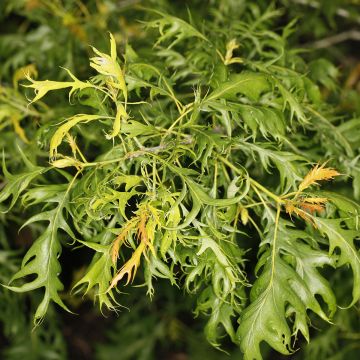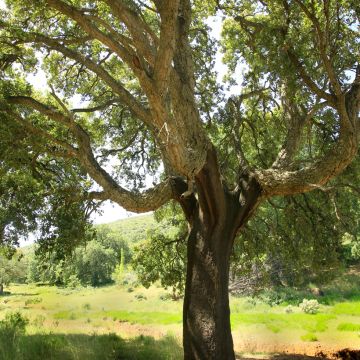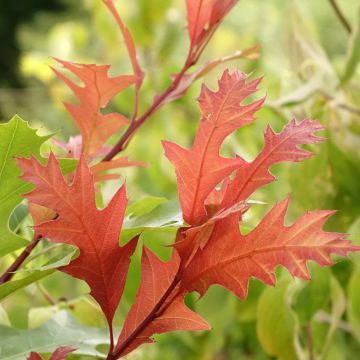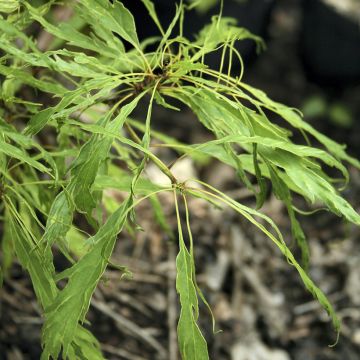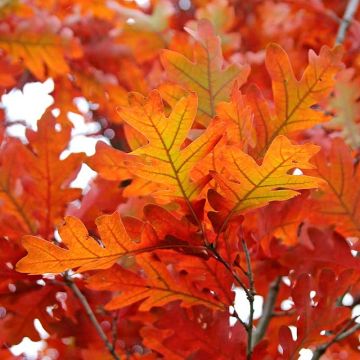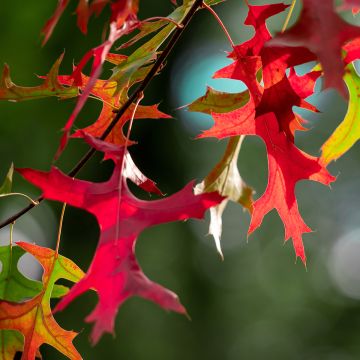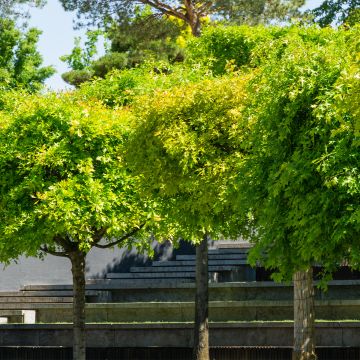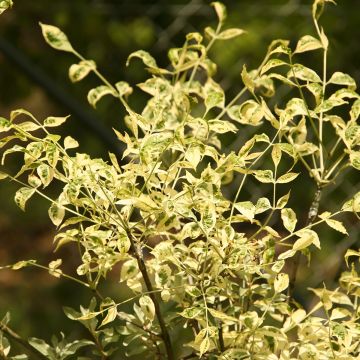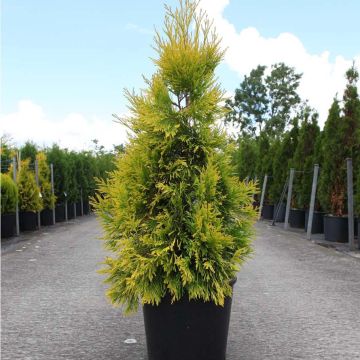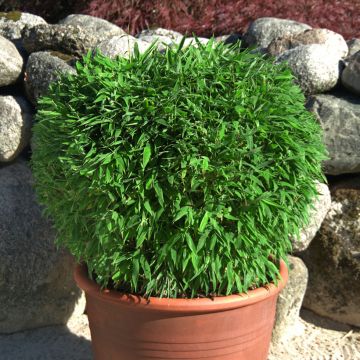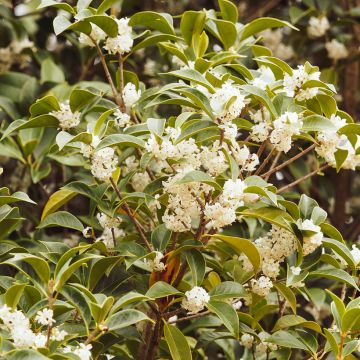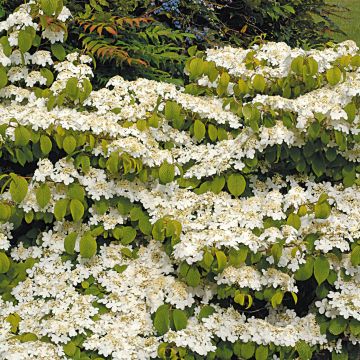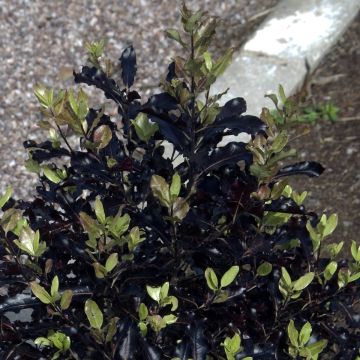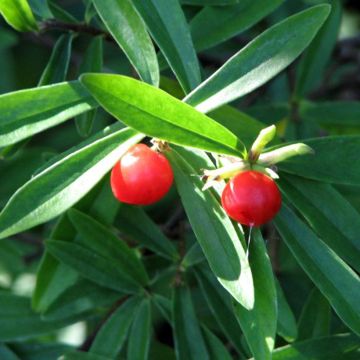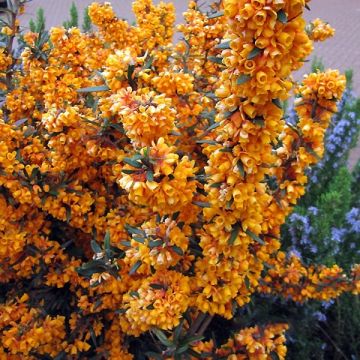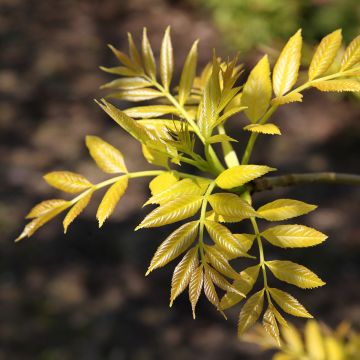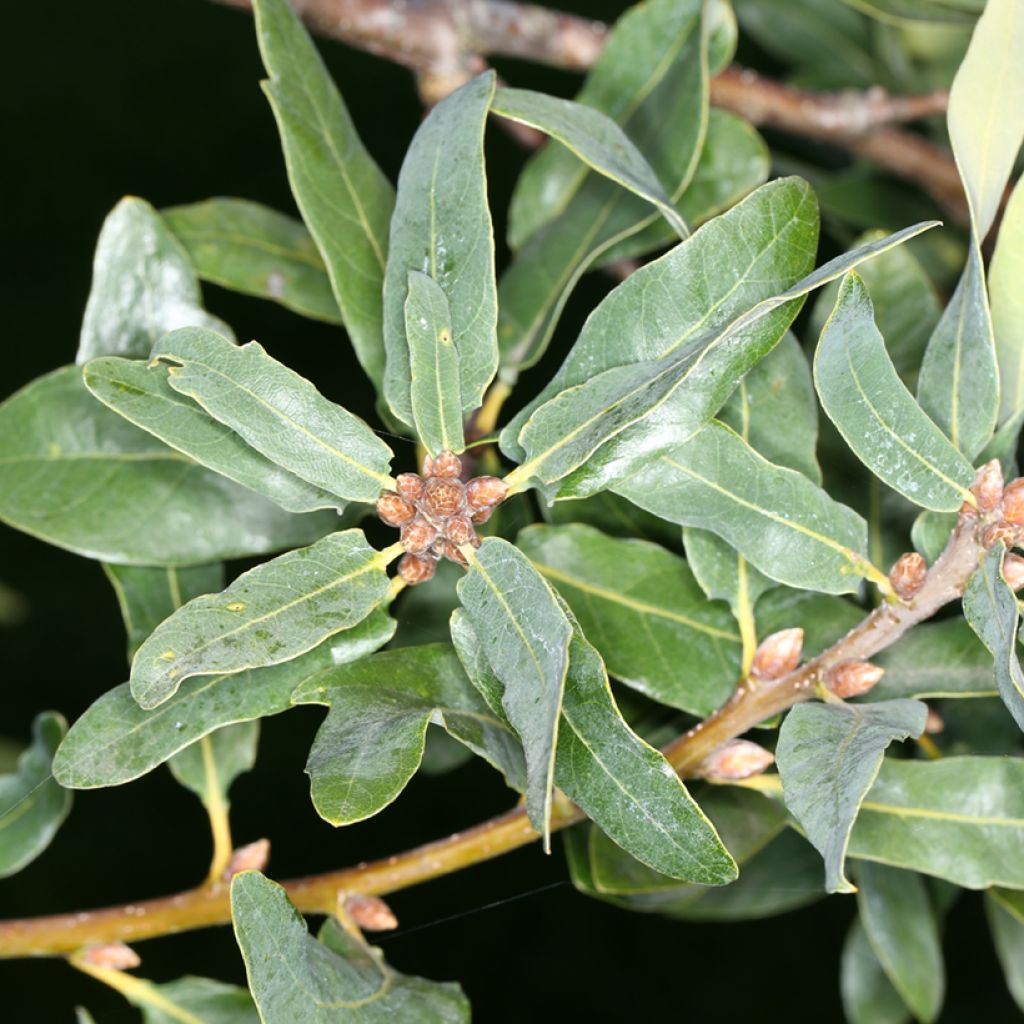

Quercus robur Salicifolia - English oak
Quercus robur Salicifolia - English oak
Quercus robur Salicifolia
English oak, Pedunculate oak
This item cannot be shipped to the selected country
Delivery charge from €5.90
More information
Schedule delivery date,
and select date in basket
This plant carries a 24 months recovery warranty
More information
We guarantee the quality of our plants for a full growing cycle, and will replace at our expense any plant that fails to recover under normal climatic and planting conditions.
From €5.90 for pickup delivery and €6.90 for home delivery
Express home delivery from €8.90.
Does this plant fit my garden?
Set up your Plantfit profile →
Description
Quercus robur 'Salicifolia' is a rare form of the Pedunculate Oak, recognizable by its oval and elongated leaves resembling those of a willow. This tree has a relatively fast growth but maintains smaller dimensions compared to the large oaks in forests. This very hardy, elegant oak tree thrives in most soils as long as they are sufficiently moist, as it does not tolerate drought. It is a collector's tree that can be planted as a specimen or in a grove.
Quercus robur 'Salicifolia', like all oaks, belongs to the Fagaceae family. The Quercus genus is particularly inspiring for collectors, as it is rich in variety. There are approximately 240 named cultivars, such as 'Salicifolia', sometimes referred to as Quercus petraea var. salicifolia or Quercus robur 'Holophylla'.
This variety initially has a narrow crown that becomes broadly conical. Eventually, this oak tree reaches a height of about 9m with a spread of 4.5 to 5m. It bears dark green, non-lobed leaves, measuring 10cm in length and 2.5cm in width, with a blunt tip. Their autumn colour tends towards yellow. The bark of the young branches is initially a tender green, gradually darkening to become brown like the trunk bark. The relatively inconspicuous spring flowering produces acorns similar to those of the species.
This 'Salicifolia' Oak is extremely hardy, down to -23/-26°C. It is quite adaptable but requires a certain level of humidity and humus-bearing, fertile soil to thrive.
Quercus robur 'Salicifolia' will delight enthusiasts of rare trees. Ideally, it should be planted as a solitary specimen in an open location. Other trees of comparable size can accompany it. For example, the red maple (Acer rubrum) with its vibrant red autumn foliage, the flowering cherry tree (Prunus serrulata 'Kanzan') that offers a stunning pink spring bloom, the star magnolia (Magnolia stellata) covered in star-shaped white flowers in spring. Finally, the rowan tree (Sorbus aucuparia) completes the scene with its pinnate leaves and red berries in autumn, attracting a variety of birds and enriching the autumn palette. Together, these trees will create an attractive garden throughout the seasons, offering a mix of colours, textures, and fragrances.
Report an error about the product description
Plant habit
Flowering
Foliage
Botanical data
Quercus
robur
Salicifolia
Fagaceae
English oak, Pedunculate oak
Quercus petraea var. salicifolia, Quercus robur 'Holophylla'
Cultivar or hybrid
Other Oak
Planting and care
Quercus robur 'Salicifolia' grows in ordinary soil, which remains deep and well-drained. It prefers fertile and humus-bearing soil. Once established, this tree with deep roots can withstand normal summers and usually does not require watering. It thrives in moist but well-drained soil, where its growth will be faster. It prefers very sunny and open exposures. Soak the root ball in a bucket of water for a quarter of an hour to thoroughly saturate it before planting. Place it in the planting hole, backfill around it, and water generously. Use a sturdy stake to assist its initial growth, water for the first two years, and then let nature take its course. Once established, this tree requires very little maintenance, except for the removal of dead wood. It is susceptible to powdery mildew, like many oaks.
Planting period
Intended location
Care
This item has not been reviewed yet - be the first to leave a review about it.
Striking foliage shrubs
Haven't found what you were looking for?
Hardiness is the lowest winter temperature a plant can endure without suffering serious damage or even dying. However, hardiness is affected by location (a sheltered area, such as a patio), protection (winter cover) and soil type (hardiness is improved by well-drained soil).

Photo Sharing Terms & Conditions
In order to encourage gardeners to interact and share their experiences, Promesse de fleurs offers various media enabling content to be uploaded onto its Site - in particular via the ‘Photo sharing’ module.
The User agrees to refrain from:
- Posting any content that is illegal, prejudicial, insulting, racist, inciteful to hatred, revisionist, contrary to public decency, that infringes on privacy or on the privacy rights of third parties, in particular the publicity rights of persons and goods, intellectual property rights, or the right to privacy.
- Submitting content on behalf of a third party;
- Impersonate the identity of a third party and/or publish any personal information about a third party;
In general, the User undertakes to refrain from any unethical behaviour.
All Content (in particular text, comments, files, images, photos, videos, creative works, etc.), which may be subject to property or intellectual property rights, image or other private rights, shall remain the property of the User, subject to the limited rights granted by the terms of the licence granted by Promesse de fleurs as stated below. Users are at liberty to publish or not to publish such Content on the Site, notably via the ‘Photo Sharing’ facility, and accept that this Content shall be made public and freely accessible, notably on the Internet.
Users further acknowledge, undertake to have ,and guarantee that they hold all necessary rights and permissions to publish such material on the Site, in particular with regard to the legislation in force pertaining to any privacy, property, intellectual property, image, or contractual rights, or rights of any other nature. By publishing such Content on the Site, Users acknowledge accepting full liability as publishers of the Content within the meaning of the law, and grant Promesse de fleurs, free of charge, an inclusive, worldwide licence for the said Content for the entire duration of its publication, including all reproduction, representation, up/downloading, displaying, performing, transmission, and storage rights.
Users also grant permission for their name to be linked to the Content and accept that this link may not always be made available.
By engaging in posting material, Users consent to their Content becoming automatically accessible on the Internet, in particular on other sites and/or blogs and/or web pages of the Promesse de fleurs site, including in particular social pages and the Promesse de fleurs catalogue.
Users may secure the removal of entrusted content free of charge by issuing a simple request via our contact form.
The flowering period indicated on our website applies to countries and regions located in USDA zone 8 (France, the United Kingdom, Ireland, the Netherlands, etc.)
It will vary according to where you live:
- In zones 9 to 10 (Italy, Spain, Greece, etc.), flowering will occur about 2 to 4 weeks earlier.
- In zones 6 to 7 (Germany, Poland, Slovenia, and lower mountainous regions), flowering will be delayed by 2 to 3 weeks.
- In zone 5 (Central Europe, Scandinavia), blooming will be delayed by 3 to 5 weeks.
In temperate climates, pruning of spring-flowering shrubs (forsythia, spireas, etc.) should be done just after flowering.
Pruning of summer-flowering shrubs (Indian Lilac, Perovskia, etc.) can be done in winter or spring.
In cold regions as well as with frost-sensitive plants, avoid pruning too early when severe frosts may still occur.
The planting period indicated on our website applies to countries and regions located in USDA zone 8 (France, United Kingdom, Ireland, Netherlands).
It will vary according to where you live:
- In Mediterranean zones (Marseille, Madrid, Milan, etc.), autumn and winter are the best planting periods.
- In continental zones (Strasbourg, Munich, Vienna, etc.), delay planting by 2 to 3 weeks in spring and bring it forward by 2 to 4 weeks in autumn.
- In mountainous regions (the Alps, Pyrenees, Carpathians, etc.), it is best to plant in late spring (May-June) or late summer (August-September).
The harvesting period indicated on our website applies to countries and regions in USDA zone 8 (France, England, Ireland, the Netherlands).
In colder areas (Scandinavia, Poland, Austria...) fruit and vegetable harvests are likely to be delayed by 3-4 weeks.
In warmer areas (Italy, Spain, Greece, etc.), harvesting will probably take place earlier, depending on weather conditions.
The sowing periods indicated on our website apply to countries and regions within USDA Zone 8 (France, UK, Ireland, Netherlands).
In colder areas (Scandinavia, Poland, Austria...), delay any outdoor sowing by 3-4 weeks, or sow under glass.
In warmer climes (Italy, Spain, Greece, etc.), bring outdoor sowing forward by a few weeks.

































